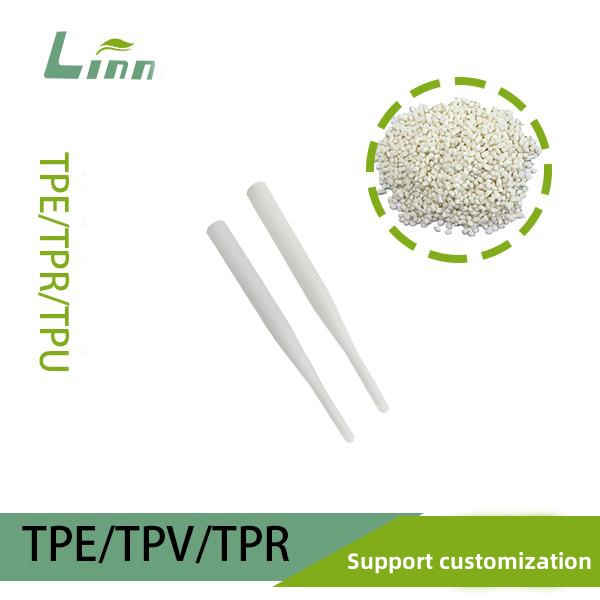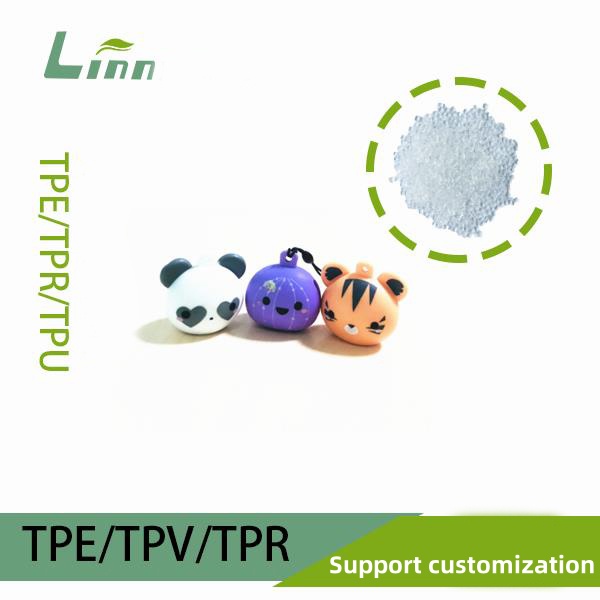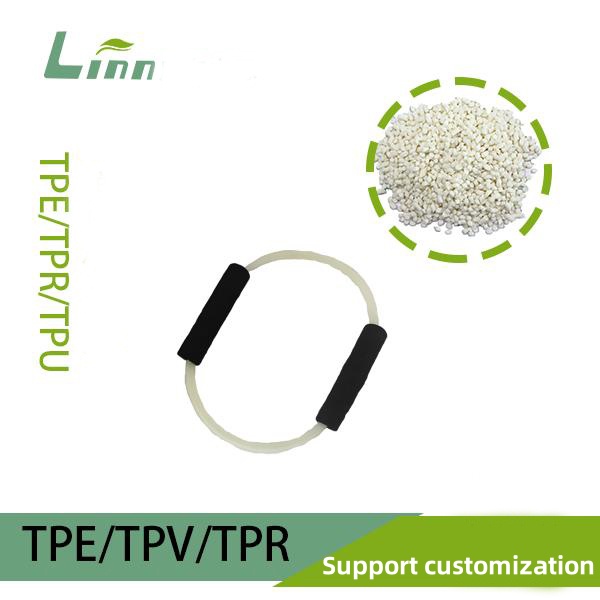Hello everyone! I’m a veteran in the materials science industry, and today I’d like to talk about the hardness classification of TPE elastomer raw materials. As a material that’s everywhere in our daily lives, TPE (Thermoplastic Elastomer) stands out for its unique flexibility and ease of processing, making it a go-to choice in fields like automotive parts, consumer goods, and medical devices. I’m guessing some of you are curious about how its hardness is categorized, or maybe you’re scratching your head over which type to pick for a project. Having spent years in this field, I’ll break down TPE’s hardness classifications for you and share some hands-on insights—hopefully, this will shed some light and help you out!

What Is a TPE Elastomer?
Before diving into hardness, let’s get a quick grasp of what TPE is. TPE stands for Thermoplastic Elastomer, a high-molecular-weight material that blends the traits of plastic and rubber. What makes it special? It can be molded like plastic when heated yet offers the elasticity and softness of rubber. I first encountered TPE years ago during a wire sheathing project—my client needed something soft yet abrasion-resistant, and TPE blew me away with how well it fit the bill.
Hardness is a defining feature of TPE, directly influencing how it performs and feels in different applications. For instance, a shoe sole needs enough hardness to provide support, while a sealing strip calls for a softer touch. Understanding hardness classifications is key to picking the right material and nailing your design.
How TPE Hardness Is Measured
TPE hardness is typically measured using the Shore Hardness scale, a standard method for gauging the hardness of polymers, rubbers, and elastomers. The Shore scale comes in different levels, with Shore A and Shore D being the most common:
Shore A: Used for softer materials like rubber and flexible TPE, ranging from 0 to 100.
Shore D: Suited for harder materials like rigid plastics and some high-hardness TPEs, also ranging from 0 to 100.
When I test hardness in the lab, it feels a bit like “sampling a dish”—a gentle press with the durometer, and you get a sense of the material’s “soft-or-firm personality.” Generally, TPE hardness spans from Shore A 20 to Shore D 60, with each range serving a unique purpose.

Detailed Breakdown of TPE Hardness Classifications
TPE covers a wide hardness spectrum, and based on industry norms, I’ve grouped it into several categories. Drawing from my own experience, here’s a clear rundown:
1. Ultra-Soft Grade (Shore A 0-30)
This is the softest tier of TPE, with a texture close to jelly or silicone. The first time I held it, it felt so soft I thought it might squish out of my hand! Its highlights include:
Extreme softness, excellent elasticity.
Applications: Medical catheters, baby products (like pacifiers), flexible seals.
Processing Tip: Ultra-soft TPE has poor flowability, so you’ve got to carefully control temperature and pressure during injection molding.
I once helped a client tweak the production of an ultra-soft TPE. The material kept sticking to the mold when the temperature crept too high—after dialing it back to 180°C, we finally got it right.

2. Soft Grade (Shore A 30-60)
This range offers a soft yet supportive feel and is the most common type you’ll encounter day-to-day. Think:
Balanced flexibility and strength.
Applications: Wire and cable sheathing, handle grips, sports equipment.
Real Example: I worked on a treadmill handle project where the client chose Shore A 45 TPE—comfy to grip with just the right amount of friction.
This hardness level is super approachable and a breeze to process, making it a favorite for many manufacturers.
3. Medium-Hard Grade (Shore A 60-90)
Here, TPE starts to feel a bit tougher—less squishy but still elastic. Its key traits are:
Increased rigidity, better wear resistance.
Applications: Automotive seals, shoe soles, tool casings.
Experience: I’ve seen Shore A 75 TPE used in a car sealing strip project—it passed a 500-hour weathering test with flying colors.
This range shines in products needing structural strength, and I love how versatile it is.

4. Hard Grade (Shore A 90-Shore D 60)
This is the toughest TPE tier, bordering on hard plastic territory while retaining some elasticity. It features:
High strength, impact resistance.
Applications: Industrial components, electronics housings, rollers.
Story: A friend once asked me to pick a material for skateboard wheels—we settled on Shore D 50 TPE, striking a great balance between hardness and bounce.
Hard-grade TPE can be trickier to process, but its performance makes it worth the effort for heavy-duty uses.
TPE Hardness Classification Table
To make things visual, here’s a table summarizing the hardness ranges, their traits, and uses:
| Hardness Range | Texture Description | Typical Applications | Processing Notes |
|---|---|---|---|
| Shore A 0-30 | Ultra-soft, jelly-like | Medical catheters, baby items | Low-temp molding, avoid sticking |
| Shore A 30-60 | Soft with elasticity | Wire sheathing, grips | Standard processing, good flow |
| Shore A 60-90 | Medium hardness, supportive | Seals, shoe soles | Check wear resistance |
| Shore A 90-Shore D 60 | Hard yet tough | Industrial parts, rollers | High-temp extrusion, control cooling |
These are based on my projects and industry benchmarks—exact values might shift depending on the formulation.
Factors Affecting TPE Hardness
Hardness doesn’t just happen; it’s tied to TPE’s composition and production. From my time in the field, here are the big players:
Hard Segment vs. Soft Segment Ratio
TPE is made of hard segments (like polyester or polystyrene) and soft segments (like polyether or polyolefin). More hard segments mean higher hardness; more soft segments make it softer. I once bumped the hard segment by 5% in a formula, and the hardness shot from Shore A 50 to 70.
Fillers
Adding stuff like talc or calcium carbonate boosts hardness but can cut elasticity. A client once wanted Shore A 80 TPE—I added 10% filler, hit the target, but the toughness took a hit.
Processing Temperature
Too much heat can break down molecular chains, softening the material. I learned this the hard way in the lab when a 20°C overrun left me with a batch softer than planned.
Plasticizers
Plasticizers soften TPE, but overdo it, and durability suffers. I usually cap them at 5% to keep things balanced.

How to Pick the Right TPE Hardness?
Choosing hardness is an art—it depends on what you need. Here are some tricks I’ve picked up:
Define the Purpose: Shoe soles do well around Shore A 70; grips feel best at Shore A 40-50.
Test Samples: Don’t just trust numbers—feel the material yourself. I often send clients samples of different hardness levels to try out.
Weigh Costs: Higher hardness often means pricier formulas, so balance performance with budget.
I once helped a buddy pick TPE for a yoga mat—he wanted a soft touch, so we went with Shore A 35. The feedback was stellar!
TPE Hardness in Real-World Industries
TPE hardness classifications play distinct roles across industries. Here are some examples from my work:
Automotive: Seals often use Shore A 70-80 TPE for sealing power and weather resistance.
Consumer Goods: Phone cases typically hit Shore A 50—great feel and drop protection.
Medical: Ultra-soft Shore A 20 or below TPE is common in IV tubes—safe and comfy.
I recently read a ScienceDaily article about TPE’s growing use in wearables—hardness control is a big deal there.

Final Thoughts
TPE elastomer hardness classifications might seem straightforward, but there’s a lot going on beneath the surface. From ultra-soft to hard-grade, each range has its sweet spot. I hope this piece gives you a solid grasp of TPE hardness—whether you’re picking materials or just curious, I’ve got you covered. As someone who’s been knee-deep in materials for years, I find TPE’s “soft-and-tough” duality endlessly fascinating—it’s always full of surprises.
Got questions? Like help with a specific hardness choice? Drop a comment—I’d love to chat!
Frequently Asked Questions
Q1: Can TPE hardness be customized?
A: Absolutely! By tweaking the hard/soft segment ratio and additives, you can dial hardness within ±5 units. I’ve done a Shore A 62 custom job before.
Q2: Does higher hardness mean less elasticity?
A: Generally, yes—harder TPE tends to lose some stretch. But tweaking the formula, like upping soft segments, can help.
Q3: How do you test TPE hardness?
A: Use a Shore durometer—press it into the surface, and you’ll get a reading in seconds. I recommend averaging multiple spots.
Q4: Is hardness tied to durability?
A: Somewhat. Higher hardness often means better wear resistance, but if it’s too hard, it might get brittle—depends on the use case.





